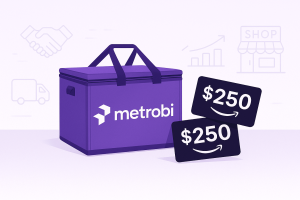The economics of running a business can quickly go from being a simple equation to demanding complex calculations. But, in my opinion, if you’re prepared, they almost never turn into demotivating factors, and we’re here to help.
Today, we’re going to explain all about the break-even point. Understanding your break-even point is crucial, but do you know the role of constant expenses in this calculation? Constant expenses, or fixed costs, are essential to figure out where your business stands.
The break-even point for a business is the point at which the business neither makes nor loses money from the sale of its products. To calculate a business’s break-even point, you need to know its fixed and variable costs. Learn how to factor in your acquisition costs for customers: This article dives into the intricacies of calculating the customer acquisition cost, its impact on your break-even point, and strategies for enhancing it to propel your business forward.
Let’s imagine you’re running a restaurant. Fixed costs are those that don’t change regardless of how much food and drink your restaurant sells, such as rent or mortgage payments, insurance, and payroll. Variable costs are those that do change with sales volumes, like ingredients for the meals and beverages. This discussion aims to guide you in finding effective ways to streamline your restaurant’s fixed expenses, ensuring more efficient financial management.
So, what is the break-even point for your business? The break-even point (BEP) is the amount of revenue needed to cover fixed costs and pay back your initial investment. This number can vary depending on many factors, including location, size, and competition. If you are planning on opening a business, this calculation can help you determine whether or not it’s worth all the hard work, investment and can even guide your exit strategy planning for the future.
In other words, your BEP is the amount of money that needs to be spent on a particular product before your business starts making a profit. This is usually determined by the cost of production and the price at which the product can be sold, i.e. your menu pricing.
Let’s continue with a simple but vivid example for a restaurant. If your restaurant spends $10 on making a pizza but sells it for only $5, you have lost $5. If you spend $20 on a pizza and sell it for $15, you’re still $5 under the water. However, if your restaurant spends only $5 on a pizza but sells it for $25, you make a profit of $20. Discover the significant role that calculating the cost of goods sold plays in ensuring your restaurant maintains a healthy margin and profitability.
As long as the restaurant makes enough money to cover the expenses, you’ll stay in business, which is the entire point. However, if the restaurant does not make enough money to cover the costs, then it will go out of business. This is where the break-even point comes into play.
Metrobi drivers are rated 4.97/5
Trusted by local businesses for:
- Background-checked professionals
- Specialized in business deliveries
- Same drivers for consistency
- 4.97/5 average delivery rating
How to Calculate Break-Even Point?
There are several methods that can help you calculate your break-even point formula.
1. Calculate your average daily sales
The ADS is calculated by dividing the total amount of revenue generated from each day’s sales by the number of orders that day. This can be done using any accounting software.
The formula used to calculate this number is:
Example:
If you sold $10,000 worth of food at $100/table, then your total tables sold would be 10,000. Your total sales would be $10,000. Divide that by 10,000 to get 0.01, or 1% of your total tables sold. Multiply that by 100 to get your average daily sales per table: 0.01 x 100 $1.00.
What Affects the Break-Even Point?
After deciding on your preferred method of calculating your break-even point, you should think about how you can use the break-even point to your advantage. What are the extra costs that affect your BEP? How much are you spending on packaging and delivery? Is there a way to reduce costs while maintaining the quality of your products and service?
Cut Costs with Metrobi
For a local business, it is hard to squeeze more profits off of the BEP. Here is a final tip for reaching and maintaining your break-even point; exploring a new partner like Metrobi may help cut your delivery costs by up to 30%.
Metrobi is an innovative last mile solution for wholesale and home deliveries. It has become a lifeline for many small businesses as a reliable delivery service. Convenience, reduced delivery costs, and an optimum BEP are all one phone conversation away. Elevate the value of your customer’s lifetime engagement by leveraging Metrobi’s efficiency to ensure repeat business and increased revenue.














